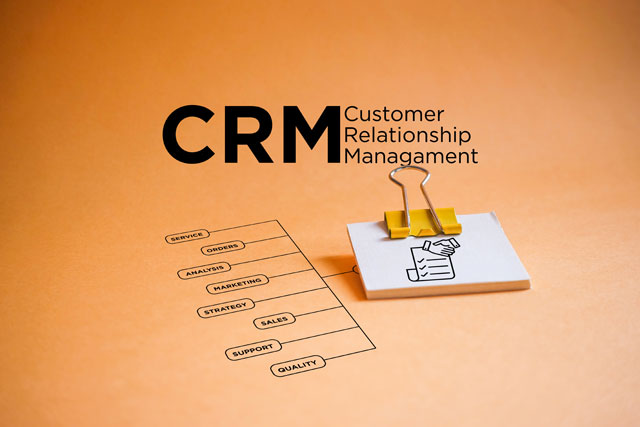At A Glance
Business owners or managers who let conflict run rampant in their organization will face enormous consequences. The consequences of conflict cannot be fully quantified and will never be fully known. One thing is for sure: Conflict costs a lot!
If you work in a business setting that experiences conflict, even if you are not in a supervisory role -- for example, a co-worker is involved in conflict -- you have the responsibility to stop it. Why?
Because conflict is like poison to the work environment. Even more than that, conflict costs so much it can drive the company into the ground and drive you out of a job. This is not an exaggeration. Conflict costs so much, it can turn an effective and outwardly focused business (that is, one that is properly focused on meeting customer needs) upon itself: The managers end up putting out fires, and the employees spend more time in bitter disputes than in providing proper service.
In this article we're going to look at the various costs and consequences of conflict. Although we cannot place a dollar figure on each situation, you should consider the monetary cost if a conflict arose in your situation. You'll be surprised at how much it is.
Personal costs
Personal costs are the consequences of conflict on the individuals in the organization. However, like ripples in a pond, be aware that conflict does not only affect the people involved in the conflict itself, but spreads to those around.
Self-esteem is one area of personal consequence resulting from conflict. Sometimes one person's world view comes across as much more bitter to other people, and that one person can (unintentionally or intentionally) say hurtful things to others.
Real life example : One woman got a new job and would have enjoyed it; however, a very blunt supervisor made comments that were quite frank and (unintentionally) hurtful to the woman. Although attempts were made to resolve the conflict, the woman felt her only recourse was to quit the job, because she thought she was not good enough to get the work done.
Poor self-esteem can lead to even worse problems, including health-related problems that can directly impact personal productivity. Rather than do a good job, the person who feels the pressure (whether they are a part of the conflict or not) may often call in sick, or begin to show signs of not being fully committed to the job -- perhaps by coming in late, or going home early, or surfing the Internet at work.
Real life example : One young man had just been promoted to a new management position. He inherited a department that had been in a serious state of conflict between people in the department, as well as with clients, vendors, and other departments. He began the process of repairing the relationship bridges. Unfortunately, he would be in the middle of repairing one bridge, and another conflict would interrupt his work and keep him from completing his task. He ended up quitting because he could simply not keep up with the demands of repairing each and every broken bridge.
On an individual basis, productivity and self-esteem problems can arise because of conflict in the workplace. The easiest place to see it is among the people who are in the conflict themselves. But do not fool yourself into thinking that those are the only people involved. Everyone in your workplace will experience the negative consequences of conflict. Let's move our microscope back a little and look at the consequences and costs associated with conflict, and its impact on the overall workplace.
Overall, conflict acts like poison in the workplace. It simply does not provide a conducive environment in which work can be effectively accomplished. Let's look at the workplace consequences.
Productivity is one of the first places you will see the expense of the conflict. People simply do not get work done when there is conflict, and whether they mean it or not, they draw in other people.
Real life example : A small town grocery store was owned by a husband and wife. Marital conflict arose and they brought it into the work place. One day, the husband walked into the store, saw a display of cola and requested an employee move it. The employee spent the entire day moving the cola according to the wishes of the owner. The very next day, the wife came in and requested the same employee to move the cola display back to where it was. With conflict like that, it is no wonder the couple added a bankruptcy to their divorce proceedings.
In the example above, we see how conflict in the business (and in the marriage) brought down the productivity of the store.
Exercise : Assuming the innocent employee in the previous real life example was paid $8 and worked 6 hours each day on the display, what is the total cost of the event? Before you do some simple math, consider this: The other work that was supposed to be performed by that employee had to be done by someone else. Do you think the profit they made in cola was anywhere near the cost they paid their employees?
Resources are another area that end up getting hit hard by conflict in the work place. Rather than use business resources to do the job, people in the conflict use the workplace resources to back up their side of the conflict.
Real life example : Two factions in a large company set to work trying to convince the other faction they were right. They held meetings where they each showed PowerPoint presentations and handed out reports to prove their side of the conflict.
Exercise : Ignoring wages for a moment, consider all of the resources brought to bear to simply have each of these two factions try (unsuccessfully) to convince the other side of their position. which was already clearly stated. When making your calculation, create two columns: In one column, write down the resource used, and in the other column write down the cost. Resources should include PowerPoint, paper, printer ink, photocopiers, lights, time spent, etc.
In the example above, we see how companies that allow conflict to continue, end up wasting their resources on non-income earning situations. Instead, companies should devote all of their energy and resources on earning an income. This can only be accomplished if conflict is addressed immediately.
Personnel costs can be very high. They are often much higher than we initially realize, because the conflict takes away the employee, it reduces productivity, and the work that needs to be done has to be done by someone else (or by that employee later). The result is extended hours spent on projects that can be done in a fraction of the time. And, depending on how close the conflict is to the front lines, the conflict could drive business away, which will increase the cost that much more -- by as much as 2000 percent, (because of the cost of lost business plus the cost to get business to replace that business.
Legal costs
Should a business experience a conflict that is too great, it could result in legal costs. Perhaps, for example, two employees end up actually physically fighting, and sue each other. Or there are charges of slander or libel. Or even a lawsuit of negligence on the part of the business to deal with the ill effects of the conflict before they became bad. Whatever the case may be, legal costs may come into play and they are very expensive.
In fact, if the conflict gets to the point where lawyers are involved, the only people who are going to come away happy are the lawyers (who can charge a high hourly rate). Everyone else will suffer tremendously.
Other consequences
Aside from the monetary cost of conflict, there are other consequences: People will no longer want to come into work. They will bad-mouth the company, ("It's not a nice place to work; don't do business there,") to prospective customers, prospective employees, and prospective vendors.
Employee, customer, and vendor loyalty will be lost, and those are difficult commodities to regain once they are lost. Conflict reflects badly on an entire organization - the department or the business - even if it is just a small segment of the company.
Real life example : One business was looking for service from a vendor who kept making mistakes. That vendor lost the business and even after five years and a complete change in staffing, the business would not even consider using the vendor again.
Real life example : One business was in such a serious conflict with its vendor, that the vendor's employees boycotted the business. Even employees who no longer worked for the vendor avoided doing business with the company and recommended against them to their family and friends.
Real life example : One employee, frustrated by another employee, posted false facts about them online at a well-known website.
All of these are real life examples of times when conflict resulted in serious costs to one or more of the parties. These conflicts could have all been avoided if they had been dealt with up front by someone in the company.
Conflicts will arise -- that is inevitable. When they do, the company has the obligation to put an end to it.
Worst case scenario
A worst case scenario does exist. If conflict is not stopped, it can cause bitter dissension in the workplace. When that happens, productivity goes down, employee health claims goes up, employee turnover goes up, and customer loyalty goes down.
Anyone who has worked in business can tell you that these things are the early warning signs of a business that is imploding upon itself. In a few months, or a few years ,(depending on the size) it will cease to exist: The company will go bankrupt.
Summary
Workplace conflict is expensive. In all cases, it is far more expensive than most people realize or give it credit for. The costs affect the individual and they affect the entire workplace. It can even come to legal mediation, which is the most expensive cost.
Beyond the cost, consequences are tremendous: Social and interpersonal consequences, as well as lost business will result. Left to its own, conflict can destroy a business.






























